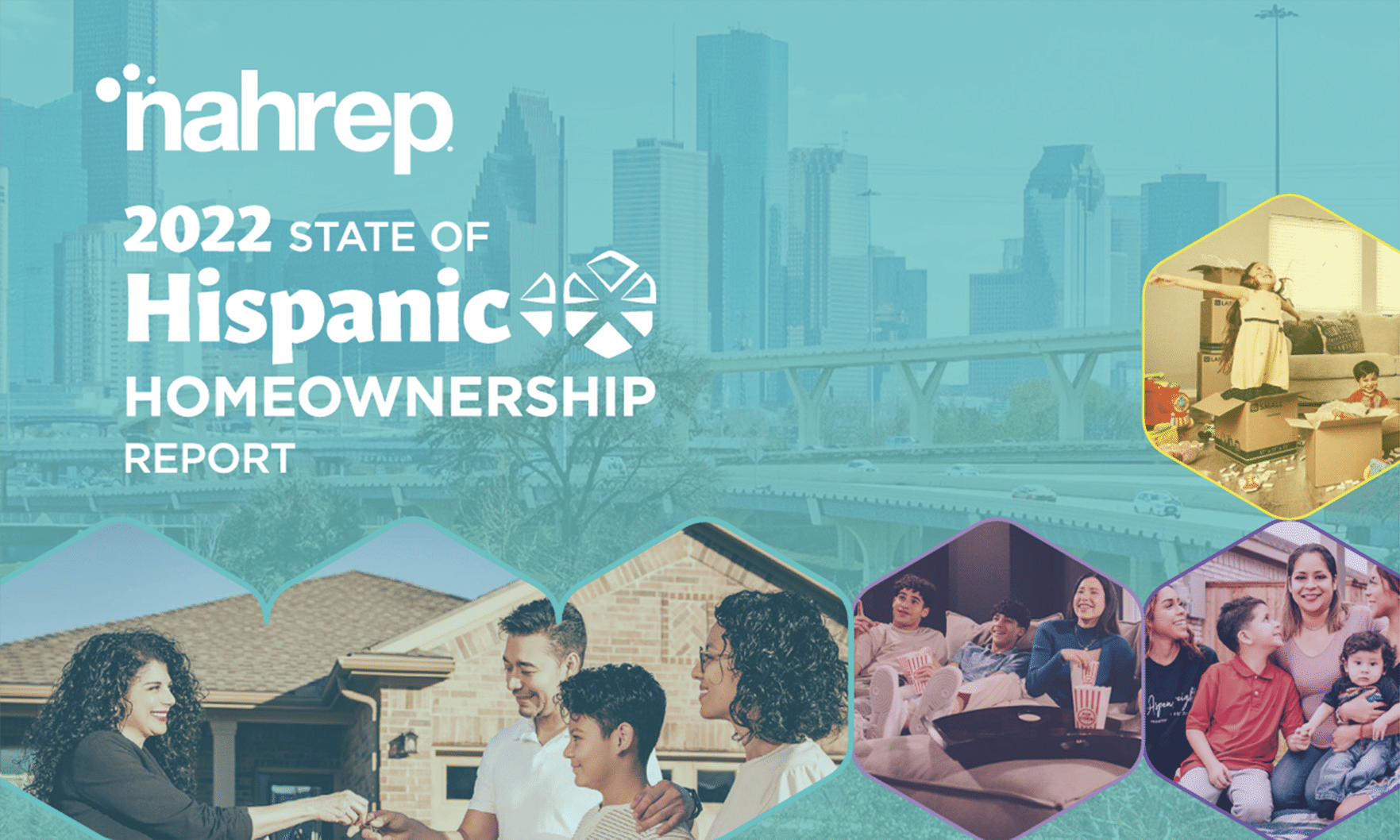
Via NAHREP
While the Hispanic homeownership rate is still significantly lower than non-Hispanic homeownership — 48.6% compared to 74.4% — trends like multigenerational homebuying, co-borrowing and mortgage readiness led to year-over-year increases in Hispanic homeownership in 2022, according to new data from the National Association of Hispanic Real Estate Professionals (NAHREP).
NAHREP’S 2022 State of Hispanic Homeownership Report provides an analysis of the current state of Hispanic homeownership in the United States. The organization compiled the report using information from their annual Latino Buyers Survey, public data from the U.S. Census Bureau and, for a more qualitative look, in-depth interviews with 25 real estate professionals selected from the NAHREP 2022 Top 250 Latino Agents.
Hispanic homeownership rates increased by 0.2% from 2021 to 2022, NAHREP found, with an increase of 349,000 owner households year over year. This represents the eighth consecutive year of growth. Over 2.3 million new Hispanic homeowner households have joined the market since 2014, bringing the current total number of Hispanic-owned homes in the U.S. to 9.2 million and the Hispanic homeownership rate to 48.6%.
Hispanic and Latino buyers are also younger than the average buyer: 70.6% of Latino homebuyers in 2021 were younger than 45, and Latinos also represent the highest share of homeowners under age 25.
Additionally, NAHREP found that Latinos are still among the most likely to live in multigenerational households, with many young buyers purchasing homes to live in with their relatives. Seven out of 25 professionals surveyed in NAHREP’s Top Real Estate Practitioner Study noted an increase in multigenerational buying in 2022, while 19 out of 25 saw an increase in co-borrowing with family. The growing trend appears outside the Latino population, too, with the U.S. Census Bureau reporting that multigenerational households have increased by 800,000 since 2017.
“Parents are adding their kids who are working and living in their households as co-signers. It’s a team effort, and Hispanics are pretty united when it comes to that,” said Veronica Galaviz of Verbode in Oklahoma City. “Despite affordability challenges, the resiliency is there. People are able to make it happen.”
These gains for Hispanic homeowners occurred during historically low levels of inventory. The month of January 2022 saw the lowest inventory levels since the 1990s, and affordably priced homes accounted for only 38.5% of listings in October of that same year. Meanwhile, skyrocketing interest rates during the second half of 2022 further strained affordability for new buyers.
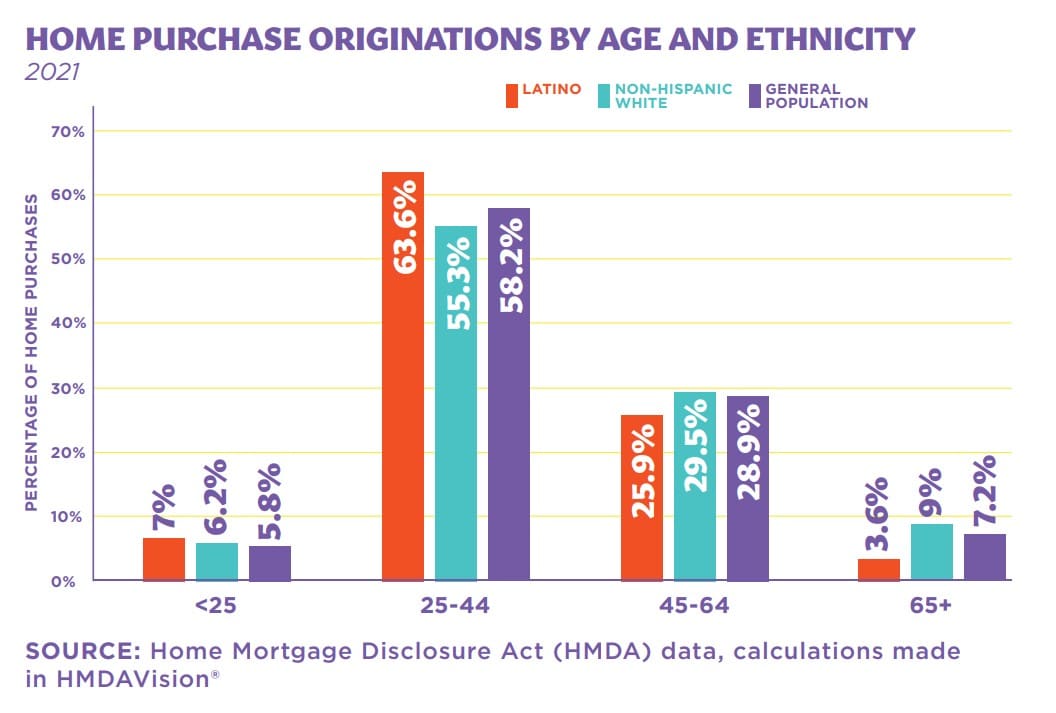
Via NAHREP
Despite this, Latinos are largely more mortgage ready than the average borrower: 7.9 million Latinos are recognized as “mortgage ready,” meaning they have the credit history to qualify for a mortgage loan. An additional 2.8 million are categorized as near mortgage ready — and that tracks with recent years. Data from the Home Mortgage Disclosure Act shows that Latino mortgage originations have increased by at least 10% every year since 2018.
Taking all this into account, Latino homeownership opportunities are greatest in cities where the most mortgage-ready Latinos under the age of 45 can afford the median-priced home. Texas cities top this list, with the border city of McAllen representing the most favorable buying conditions for Latinos. McAllen is closely followed by fellow Lone Star cities Brownsville, El Paso and Laredo while Cleveland ranks at No. 5.
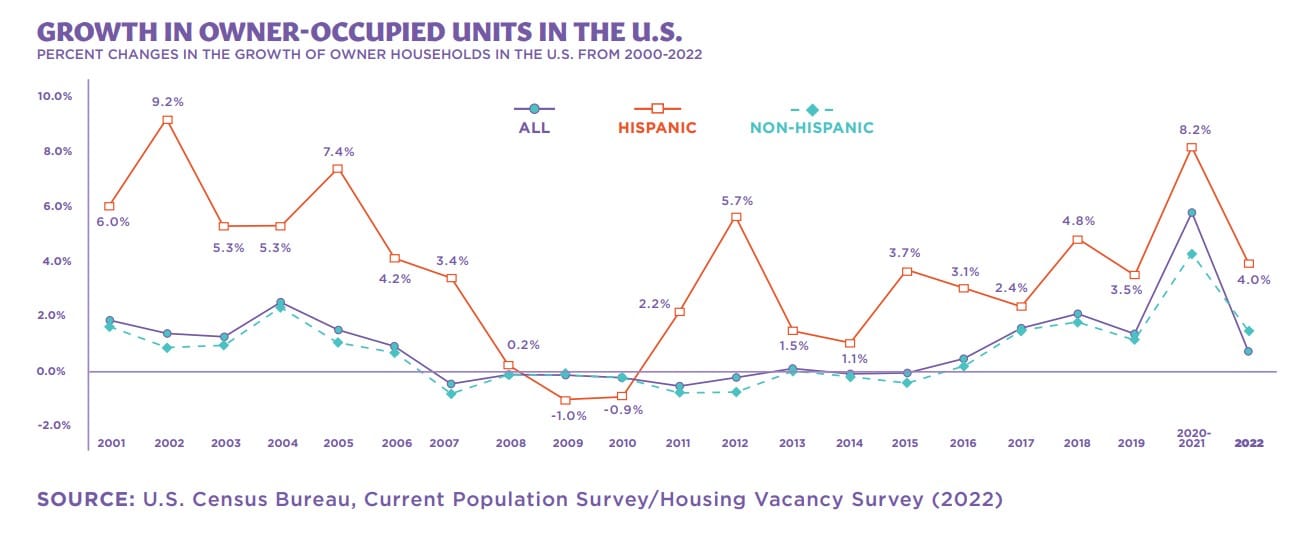
Via NAHREP
But Latinos aren’t the only demographic making huge strides toward homeownership. According to NAHREP, since 2014, non-white homeowners have made up the majority of new homeownership: 54%. Last year, the homeownership rate for all minority households reached a total 50%, and is projected to increase until 2040.
However, several key statistics from NAHREP help illustrate why Latino homeownership, in particular, has grown so steadily. First, Latinos make up 18.9% of the U.S. population yet account for 53.8% of nationwide population growth in the past decade. They also have the highest labor force participation rate of any demographic, and Latino people are near twice as likely to start their own business. Latino college enrollment has also more than doubled in the past 20 years as Latino household income growth outpaces that of non-Latino households.
Of course, the roadblocks that existed for Latino homebuyers in 2022 will still present issues in the future. In addition to volatile interest rates and inventory shortages, home prices have inflated in many places with dense Latino populations. In Florida, which is home to over 5.8 million Latinos, prices increased 18% year over year during 2022. The Urban Institute also found that 80% of all available properties across the country were unaffordable to “middle-income families” in 2022.
Another real estate roadblock is the language barrier which exists for many Latino homebuyers. “I deal with a lot of Latino buyers who only speak Spanish,” Robert Sanchez, a Realtor at eHomes in Chino, California, said in the report. “Luckily, I speak the language, but you have that difficulty because everything is in English. Your contracts are in English sometimes. The lender only speaks English.” Spanish-speaking agents like Sanchez can help facilitate communication. Over 60% of Latino agents serve predominantly Latino clients, according to NAHREP, with 38% saying they conduct more than half of their transactions entirely in Spanish.
But there are still far fewer Latinos working in real estate compared to other demographics. Today, Latino Realtors make up 11% of all Realtors, and only 8.9% of all loan officers. To address the growing real estate needs of the Latino community, NAHREP recognizes the need to diversify in the industry. In the report, they encourage professionals in all real estate fields — brokerages, mortgage lenders, developers and more — to look into options like DEI incentives and GSE racial equity programs.
“Latinos are more mortgage ready. Latinos have made strides in income and are more educated in the homebuying process,” said Nidia Fromenta Peguero of Century 21 North East in Danvers, Massachusetts. “Rent has become extremely expensive and owning a home comes with great benefits, such as building equity and security for the family. [Latinos] don’t want to rent anymore.” As NAHREP’S report illustrates, a diverse real estate industry will be more equipped to help those homebuyers.
NAHREP’s annual Latino Buyers Survey
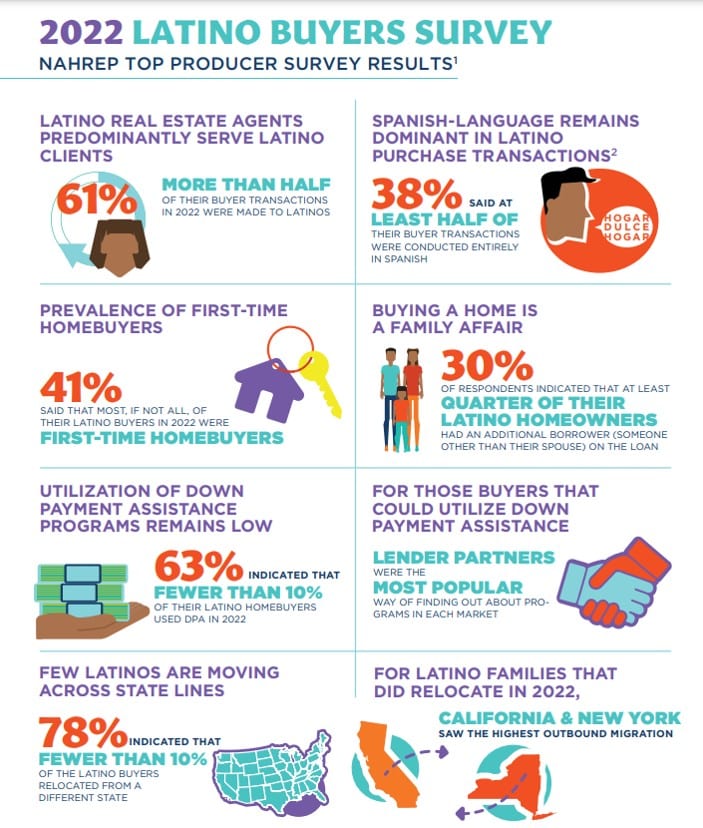
Via NAHREP
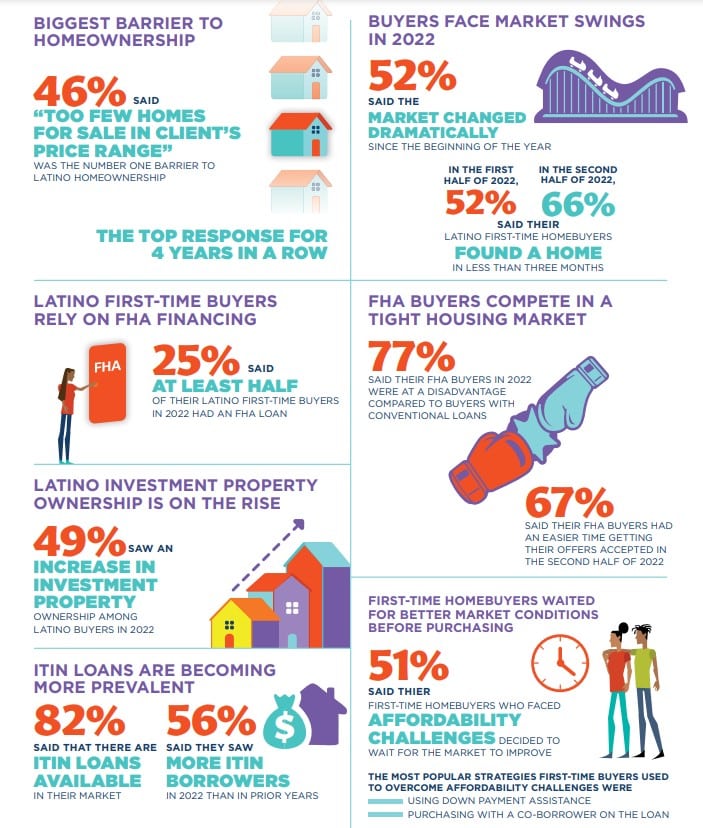
Via NAHREP
